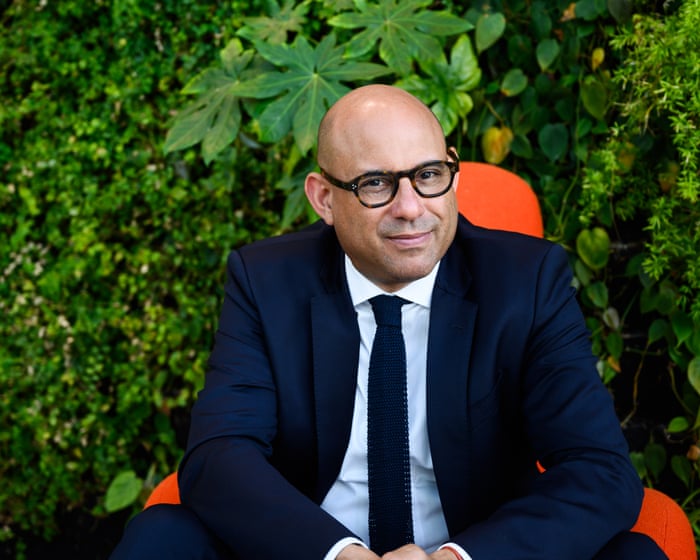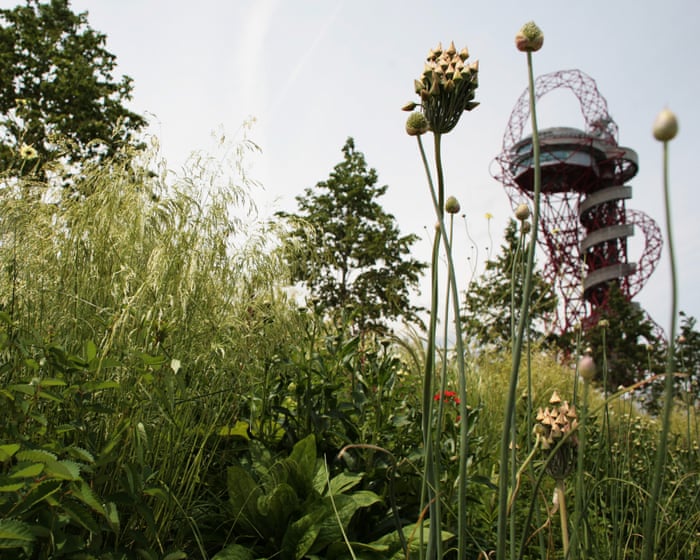The UN climate chief has stated that countries embracing the shift to a cleaner economy will see major economic benefits, pointing to China as an example. His comments come ahead of a critical summit of world leaders this week.
In a final appeal to heads of government invited to New York by the UN secretary-general, Simon Stiell, executive secretary of the UN Framework Convention on Climate Change, warned that governments are unlikely to meet this month’s deadline for submitting the climate commitments required under the Paris Agreement. However, he emphasized that they can still reshape their economies to gain from low-carbon growth.
“We’re moving in the right direction,” Stiell said. “Not fast enough, not deep enough—but the progress countries have made in transitioning to a low-carbon economy shows that something is working. We need to use every tool available to speed things up.”
On Wednesday, during the UN General Assembly, Stiell and UN Secretary-General António Guterres will make a final push for world leaders—excluding Donald Trump, who is skipping the meeting—to present their national climate plans ahead of the COP30 summit in Brazil this November. These plans, known as nationally determined contributions (NDCs), are a requirement of the Paris Agreement and are meant to outline how countries will limit global temperature rise to 1.5°C above pre-industrial levels. Beyond this threshold, climate impacts become catastrophic and irreversible.
The original deadline for these plans—which cover the next critical decade of greenhouse gas emissions—was February of this year. However, due to political turbulence following Trump’s election, Stiell extended the deadline to the end of this month. The UN will then assess whether the submitted NDCs align with the goals of the Paris Agreement.
Stiell acknowledges that the NDCs will fall short of the 1.5°C target, as many countries—including the US, Russia, and Saudi Arabia, which have recently obstructed climate talks—are expected to offer inadequate plans. Concerns also extend to other major emitters like China and the EU, despite their public pledges of climate action.
Although China has made impressive strides in green technology—with renewables now supplying a quarter of its electricity, electric vehicles capturing half the market, and low-carbon exports reaching $177 billion last year—its NDC is anticipated to be weaker than necessary and overly cautious in projecting emission reductions. This reflects both Beijing’s tendency to underpromise and overdeliver, as well as caution in response to uncertainty from the Trump administration.
The EU, long a leader in climate policy, is struggling with internal divisions as some member states react to populist opposition. It has not finalized its NDC and will miss the end-of-month deadline. This week, however, EU ministers issued a “statement of intent” to cut emissions by 66.25% to 72.5% by 2035, compared to 1990 levels. This falls short of the 79% or more that activists and experts say is achievable.
Stientje van Veldhoven, Europe regional director at the World Resources Institute, cautioned: “Europe’s statement leaves room for progress, but the broad range could send mixed signals, weaken investor confidence, and harm jobs, energy security, and competitiveness. If the EU lands at the lower end—say, 66.3%—reaching 90% just five years later will be extremely difficult. That undermines the long-term policy certainty needed for…”Investors and companies need clear signals. Australia recently announced its climate pledge, aiming to reduce emissions by 62-70% by 2035. However, this target is still too low compared to the 75% reduction analysts say is necessary to stay within a 1.5°C warming limit. The failure to commit to a full phase-out of fossil fuels has upset environmental groups. Australia is competing with Turkey to host the COP31 summit next year.
Despite this, UN climate chief Simon Stiell believes COP30 can still succeed if it outlines ways to address current shortcomings and highlights the benefits of transitioning to a green economy. In an exclusive interview with the Guardian at the UN climate headquarters in Bonn, Stiell acknowledged that national climate pledges are weaker than what science demands. Still, he emphasized their importance in guiding real-world economic decisions.
He pointed to over $2 trillion in private sector investments in green energy and low-carbon industries last year, far surpassing the $1 trillion invested in fossil fuels. “I see promise, I see action,” he said. “I see tangible output. But not enough.”
It’s common to dismiss the annual UN climate conferences as ineffective—famously called “blah blah blah” by Greta Thunberg. Yet before the 2015 Paris Agreement, the world was heading toward over 5°C of warming, which would have made the planet unrecognizable. Today, if all current commitments are met, projected warming is around 2.7°C. While still too high, this represents progress. Stiell stressed that this year’s climate pledges must at least “bend the curve” toward 1.5°C, even if they fall short.
He urged people to view these conferences as part of an ongoing process rather than expecting any single meeting to solve everything. “We set false expectations that everything needs to be resolved in that given moment,” he said.
Stiell also called for a shift in the UN’s messaging, moving away from dire warnings that often go unheeded by governments dealing with economic challenges. Instead, he plans to showcase concrete examples, like China’s success in attracting billions in investment and generating significant profits through clean energy and green transformation.
“We’ve only been telling a partial story,” he explained. “We’ve focused on the impacts on lives and livelihoods but haven’t emphasized the economic benefits—like job creation, food and water security, better health, and overall economic growth driven by strong climate action.”
He also noted that countries are increasingly recognizing the costs of inaction. Rising living costs worldwide have been worsened by food price hikes linked to extreme weather. Even wealthy areas in the US and UK are seeing homes and businesses become uninsurable—a problem once limited to poorer, vulnerable regions.
The climate crisis is on track to disrupt capitalism as we know it.UN climate chief warns of economic peril from climate crisis
Simon Stiell, the UN’s climate chief, cautioned that the severe climate impacts long endured by vulnerable nations are now reaching the world’s wealthiest and most advanced economies—a clear sign that conditions are shifting.
Climate-related damages already cost hundreds of billions of dollars annually, and the figure is rising. Within just over a decade, these costs could exceed 5% of global GDP each year. “That means a significant recession,” Stiell explained, “one unlike any we’ve seen before, because the damage will persist year after year, rather than easing as typical economic downturns do.”
If recent inflation has been enough to destabilize governments and sway elections, the climate crisis’s effect on living costs will be far more severe. Stiell noted, “We’ve seen how the price of eggs became a symbol of flawed economic policy and poor management. Now imagine that multiplied across everything you buy—food, clothing, transportation, heating, and cooling your home.”
By comparison, he said, “Covid and the global financial crisis would pale into insignificance.” He warned that governments, financial advisors, and economists who ignore these risks do so at their own peril.
Stiell speaks from personal experience. Last year, Hurricane Beryl devastated his home island of Carriacou in Grenada, echoing destruction he has witnessed worldwide. “That burns deep inside of me,” he shared. “There’s anger, there’s frustration.”
His challenge is to convey the urgency of COP30, the complexities of UN negotiations, and scientists’ warnings in a way that resonates with the global public. “Just raising an alarm isn’t enough,” Stiell emphasized. “It has to be communicated in terms that go beyond spreadsheets and are understood by ordinary people, consumers, and voters.”
“But on the other hand,” he added, “I also see opportunities. I see hope, I see resilience. The grit of humankind is empowering.”
Frequently Asked Questions
Of course Here is a list of FAQs about the UN climate chiefs optimism regarding the green transition designed to be clear and helpful
General Understanding
Q What is the green transition
A Its the global shift from an economy based on fossil fuels to one powered by clean renewable energy It also includes making our homes transport and industries more energyefficient
Q Who is the UN climate chief and why is their optimism important
A The UN climate chief is the head of the UN Framework Convention on Climate Change the organization that runs global climate negotiations Their optimism is significant because it signals that despite challenges key global leaders see concrete progress and momentum which can encourage more countries and companies to act
Q What specific reasons did the UN climate chief give for being optimistic
A Common reasons include the rapidly falling cost of renewable energy record levels of new investments in green tech stronger climate policies from major countries and growing public demand for action
Benefits and Progress
Q What are the main benefits of the green transition
A The biggest benefit is fighting climate change But it also creates new jobs in green industries reduces air pollution and can increase energy independence by using local renewable sources instead of imported fossil fuels
Q Can you give me a realworld example of the green transition working
A Yes The rapid growth of electric vehicles is a prime example Sales are soaring globally as costs fall and charging infrastructure expands directly reducing emissions from transportation
Q Is the green transition actually happening fast enough to meet climate goals
A Most experts agree progress is being made but its still not fast enough to limit global warming to 15C The optimism is about the acceleration of the transition not that the job is finished More urgent action is still needed
Challenges and Concerns
Q What are the biggest obstacles or problems slowing down the green transition
A Key challenges include the high upfront cost of new technology for some countries political resistance from fossil fuel interests the need to modernize old energy grids and ensuring a fair transition for workers in traditional energy sectors




